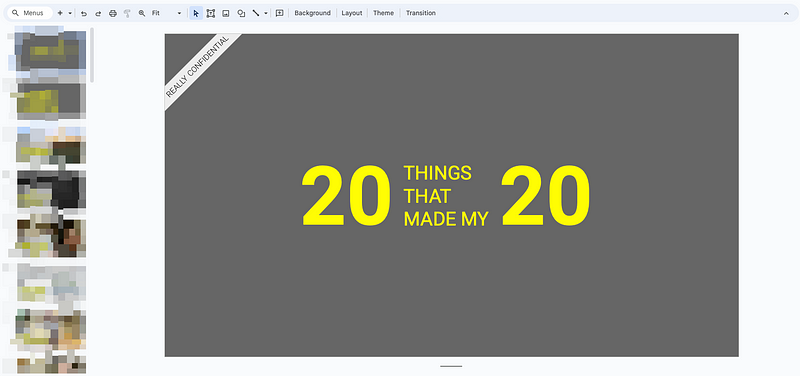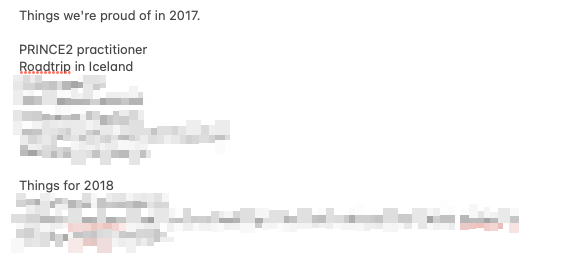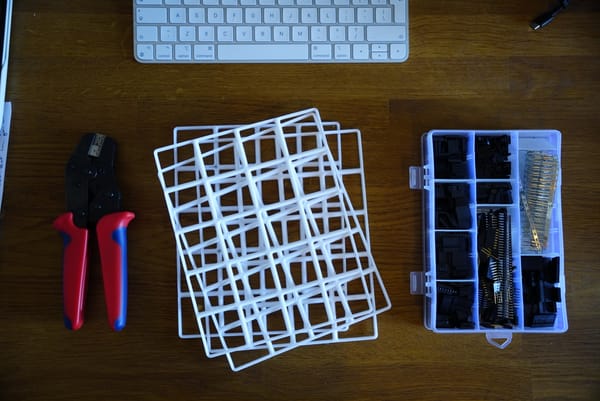🙅 How to stop complicating things to death! (as a consultant who does it too)
When is a “simple” process sufficient?

The death of a dear ritual
I had this ritual that I loved. At the end of each year, I’d put together a pack with my main achievements and things to look forward to ticking off in the future.
This died with my GF, as my year-ends became far more socially complex and my space for introspection and beautiful PPTs to look back on got greatly diminished.
There last one of these packs I put together dates from the last year I lived on my own without my GF (the connection seems undeniable).
I miss these packs. They mark a really cool passage of time.
But perhaps it’s not (just) my GF who destroyed my ritual (passionate accusatory language intended for dramatic purposes, ahead of the twist).
Maybe it was also the fragility of the habit itself.
What a luxury to have enough time and mental energy to put all of this together. And the reason why I’m writing this, is because maybe it doesn’t have to be.
The anti-fragile beginnings
Stuck in a train with no signal, I’m desperately looking on my phone for things to do offline. In 2023, the list is surprisingly short — had to do deeper, into the Apple Notes.
These are old — think iPhone 6s era (before my Samsung long term affair).
I found what you’d expect: the usual junk, WiFi passwords, credentials long elapsed, orphaned todo lists with still outstanding items, unfinished projects (some still really good, some I wish I followed through years ago).
As I daydreamed through my newly found Time Machine, one note in particular draw my attention.
My first yearly note that started it all!!

I was surprised by two things:
- It was a really basic list
- Despite its simplicity, the list still managed to evoke so much!
What went downhill from here?
There’s little doubt about what happened next.
In the subsequent years, my big brain energy loved this so much that it was set on “improving” it.
I added slides, I had a template, each achievement received a funny title, a paragraph and a photo, the set had to be of a particular number, etc.
The years I did it, it was a real joy to see.
It was also a massive chore to put together.
I was successful in creating something beautifully not fit for purpose.
The rebirth of simplicity
I’m still on the same train, luckily without mobile signal still.
“How can I fix this?” my big brain is now thinking — we’re consultants, so you can’t blame me!
Here are some thoughts for my yearly review:
- Minimum viable product should be truly minimum — sure, each year I might still have something quite complex but, for this to be a success, the little unformatted list should be enough.
- Move the task away from the busy period — tag/ flag things during the year for the curation at the end. That way, the writing happens during the year, and my job is just to review successes at the end (much more pleasant than finding them) — critiquing is easier than creating.
And as for any, more general takeaways?
- Start simple, avoid building things up too much if you know you have a mind for it.
- If you can muster the discipline (and have control over the development): Build only the next necessary feature, test, and listen for feedback.
For all other scenarios, don’t be too concerned if you find yourself drowning in complexity — it’s a good place to optimise from. Maybe this is just the way things get calibrated.
Maybe you have to try simple, learn from complex, and cut back. Bulk, trim, bulk, trim — the cycle towards… optimal?
No matter what, one lesson would be to not judge the process — just learn from it.
(Side note: I’m impressed how successful this writing session was!! Look at us — 650 words on the little iPhone. 😃 Next article: how to use trains and planes to your creative advantage! From annoying to deploying!)



